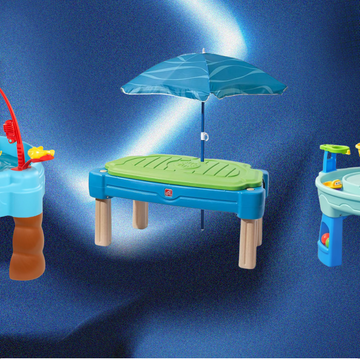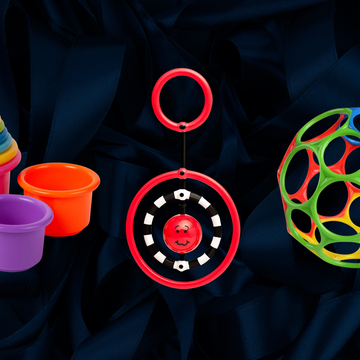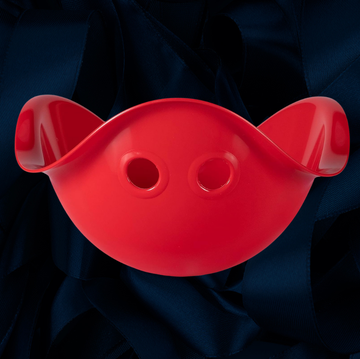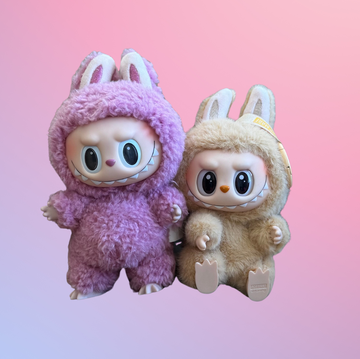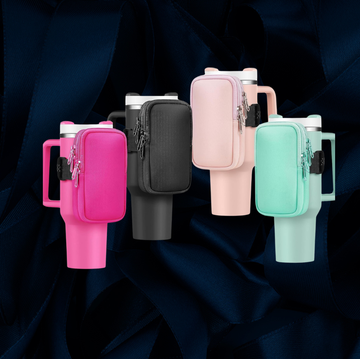So, you're thinking about getting a storytelling device for your child? Step into my office. Our family has spent years testing the top two boxes on the market, the Yoto Player and the Toniebox, and there are some key differences that will make a big impact on which one is right for your child.
On the surface, these storytellers are comparable. The price points are similar, they both come with apps that feature parental controls, and both require collectible tokens that play stories or songs to lull your children to sleep. Both work via Bluetooth, so you can connect headphones for long car rides. Both companies have partnerships with major brands and properties like Disney, Paw Patrol, and Cocomelon.
How are they so different and why does it matter? Read on to find out.
About the Yoto Player
Price
Intended for kids from 3 and up, the Yoto player uses thick cards inserted into the slot on the top to tell stories. The player retails for around $100 and individual cards range from $10 to $15. You can also buy packs with multiple cards — the brand recently released the entire Harry Potter collection — or digital cards, which are cheaper but don't have a physical counterpart. There's also a travel-friendly Yoto Mini, which has a shorter battery life and a smaller screen, but costs only $70. (Our family hasn't tried the Mini, so this review will focus on the regular Player.)
Finally, you can get a Yoto Club membership for unlimited access to Yoto Originals and other perks. There are three tiers, ranging from a basic membership ($5 per month or $40 annually) to the Collector+ ($17 per month or $150 annually).
Features
In addition to the auditory feature, there's a visual component to the Yoto; the front of the box is an 8-bit display. For each book chapter, it changes into a different picture. It's not an advanced enough image to be considered a traditional screen (à la a tablet) but it's fun enough to keep kids engaged. When a story isn't playing, it shows the time and local weather.
Yoto also comes equipped with an app where parents can set brightness and volume limits, different colors for the light that rims the box, alarm settings, and more. There's even a room thermometer built into the box that parents can check through the app. Once a card is played on the Yoto box, it automatically gets added to your app's library and you can play it from your phone. This comes in handy on road trips!
Cards aren't the only thing you can listen to on the Yoto; you can play (free!) white noise and other environmental sounds. You'll also get to know Jake, the delightful British host of Yoto Daily, an 11-minute podcast that kids can listen to for child-friendly news from around the world.
Our Experience
The word "obsession" doesn't begin to cover how my child feels about her Yoto. We got the player when she was 3 and started with a handful of Disney cards. Her collection has blossomed into dozens of cards — good thing there's a handy card case that holds up to 64 cards — and she listens to it every night in bed. Often, we hear it in the middle of the night when she wakes up from a bad dream and she's using it to soothe herself back to sleep. We even invested in an Adventure Jacket so she can carry it around easily and it's protected from small spills.
From a parental perspective, the app is flawless. It's easy to navigate and even comes with a feature that troubleshoots problems for you. I love that I can lock in different brightness and volume settings for day and night and being able to play the stories via the app is great, especially if your phone is paired with your car. (This means if you have that Harry Potter collection, you can play it via your Yoto, your phone, or wherever you can pair your Bluetooth.)
Pros
- User-friendly app with lots of features
- Comes with free sounds, stories, and a daily show
- Visual display keeps kids engaged
- Nightlight and alarm clock are built in
Cons
- Cards are not as fun to collect as figurines
- The box itself is a boring white, but you can buy protective cases in different colors
Toniebox
Price
Tonieboxes retail for $100, though you can usually catch a sale on Amazon or the Tonies site that'll drop the price to $90. Stories are played via figurines that magnetically lock onto the top of the box; prices for these start around $13 and go up to $20. You can also choose a subscription plan by age and interest (Disney, animals, educational, etc.) and Tonies will send you 2 or 3 new Tonies by mail periodically. The price will change based on your selections, but plans hover around $15 per month.
Features
Frankly, there aren't a ton of bells and whistles to the Toniebox; its brilliance is its simplicity. The figurines go on the box and it plays a story or song — boom. There are no screens and no complicated mechanics. There's an app, but there are limited parental override functions. As the company explains, the audio system was designed with children's independence in mind. The whole point is that kids get to decide what they want to listen to and how loudly to do so.
While it's technically intended for kids 3 and up, our 2-year-old has no issue operating the box, and a fellow editor's 12-month-old loves playing with hers. He does, however, tend to squeeze the "ears" so that it's at maximum volume at all times. It's a good thing that the apps allows parents to set a volume limit, because we do have to sleep in the same house, after all.
Our Experience
Our toddler has been using the Toniebox for about a year and at this point, we wouldn't survive bedtime without it. It couldn't be easier for him to use, and he loves that the Tonies double as toys. He hasn't quite figured out that he can tap and tilt the box to fast forward, but he does sleep with the box right next to his head; it's lightly padded so it's kind of like a quilted pillow.
Tonie has a license on a wide range of properties, so there are figurines of everything from Mickey Mouse to Pinkalicious to dinos from Jurassic World: Camp Cretaceous. The brand also has a Creative-Tonie line, which allow families to record their own stories and listen over and over. These are especially useful if your child loves the sound of their own voice or you want to record a story for them to listen to while you're away on a trip.
Pros
- Super simple to operate
- Available in six colors
- Tons of branded accessories (carrying cases, headphones, shelves, etc.)
- Kids love these collectible figurines
Cons
- Can't play Tonies from your phone (though there are some free stories on the app)
- Not a ton of parental controls
Durability and Battery Life
Both players need to be plugged into a USB to charge. A full battery will get you seven hours of play on the Toniebox, up to 24 hours on the Yoto Player, and 14 hours on the Yoto Mini.
The Toniebox is more durable because it's padded (unless you drop it on the ears), but the Yoto can be protected by an Adventure Jacket.
Portability
You can take either in the car, as wifi is only required for the initial setup. Because of its size, Yoto Mini is probably the best option for travel. Plus if you forget the actual player, you can still play the stories through the app.
Which Has More Stories?
Yoto has over a thousand cards and card collections in its library. Tonies has nearly 350 Tonies and bundles on its website.
Yoto Player Vs. Toniebox: Which Is Better?
There is no overall "better" option. The right storyteller for your family depends entirely on your kid and your plans for usage. Want something super simple? Toniebox is as easy as it gets. Thinking your kid would like something with more bells and whistles? Go for a Yoto.
Personally, I prefer the Toniebox for babies and toddlers. You could give a Yoto Player to a baby with no cards and play white noise and bedtime stories through your phone, but it'll be a while before they figure out how to use the device on their own. If you have a toddler who is past the "putting everything in their mouth" stage, the Tonie might be more exciting so they can have the figurines.
Both players have stories intended for older kids. Tonies has partnerships with National Geographic Kids and a series called the Clever Tonies that cover educational topics like Inventions and Innovation, which makes it great for kids up to 8 years old.
Yoto has audio versions of stories that are more advanced, like Lemony Snicket's A Series of Unfortunate Events books and even the original Star Wars trilogy. For that reason, I'd suggest Yoto for older kids.
We've loved the Yoto for our daughter because of the screen feature and the advanced app, but we'd have the pry the Toniebox out of our son's chubby (shockingly strong) fingers if we wanted to take it away. Both Yoto and Tonie are great companies with amazing customer service; you really can't go wrong.

After over a decade as a digital editor, Maggie Panos is navigating freelance writing and full-time parenting. She covered entertainment for POPSUGAR from New York and San Francisco before setting down roots in tree-covered Portland and focusing on local journalism. A self-proclaimed "okay baker", Maggie is interested in all things lifestyle — especially if those things involve Bravolebrities.









